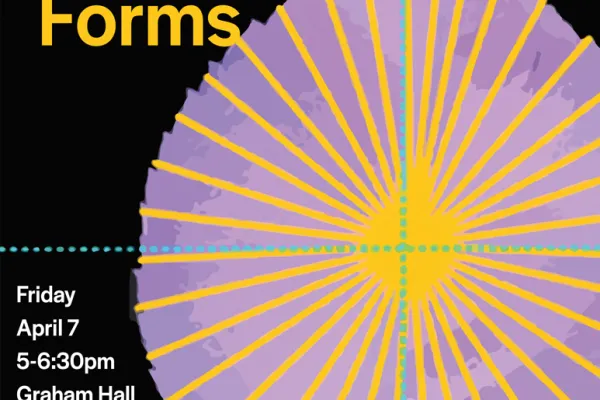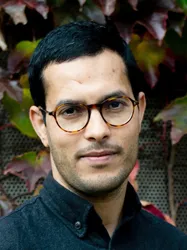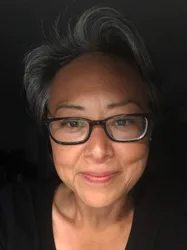Vegetal Forms: Knowing Time and Place Through Plants

Published February 15, 2023
Graham Hall, Brown Fine Arts Center, 5 p.m. on April 7, 2023
How does plant form communicate trauma, landscape, memory, and place? Join the Vegetal Forms short-term Kahn project to discuss the work of Smith College Museum of Art’s visiting artist Abdessamad El Montassir and of Elaine Gan, Assistant Professor of Science in Society at Wesleyan University. El Montassir’s work interrogates buried histories of North Africa, often looking at plants, place, and trauma. Gan is a scholar-artist engaged with relations among species, machines, and landscapes. Their presentations will be followed by an extended Q&A with the speakers. This event is free & open to the public. Masks welcome. For disability access information or requests, call 413-585-2407 or email arc@smith.edu.
About Abdessamad El Montassir

Abdessamad El Montassir was born in 1989 in Morocco, and currently lives and works in Boujdour and eastern France. He graduated from the National Institute of Fine Arts of Tetouan and the Ecole Normale Supérieure of Meknes. From 2017 to 2020, he was an associate fellow at IMéRA - Institute for Advanced Study in Marseille. He is currently the recipient of the MÉCÈNES DU SUD grant and the ADAGP x Bétonsalon grant, for which he is developing a project in partnership with Bétonsalon and the Kandinsky Library of the Centre Pompidou in Paris.
He has participated in several exhibitions including Mémoire des cendres curated by Paul de Sorbier at Maison Salvan (Labège), Maa ka Maaya ka ca a yere kono for the 13th Bamako Encounters (Bamako), Les Sentinelles curated by Pascale Cassagnau and Camille Leprince at Institut du Monde Arabe (Tourcoing), Leave No Stone Unturned [Remuer la terre] curated by Clelia Coussonnet at Le Cube - independent art room (Rabat), Ce qui s’oublie et ce qui reste curated by Isabelle Renard and Meriem Berrada at the Musée de l’histoire de l’immigration (Paris), Invisible curated by Alya Sebti for the Dakar Biennale and the ifa Gallery Berlin.
Photo of Abdessamad El Montassir by ©Franck Alix / La Cinémathèque de Toulouse.
About Elaine Gan

Elaine Gan is interested in mapping worlds otherwise. Her transdisciplinary practice combines methods from art, science, and digital/environmental humanities to study the timing and temporal coordinations of more-than-human socialities. Through writing, drawing, interactive media, and installation, Gan explores historical materialisms and temporal coordinations that emerge between species, machines, and landscapes, with a particular interest in plants and fungi.
Gan is an artist-theorist and professor who teaches at Wesleyan University, Science in Society Program. She is co-editor of an interdisciplinary anthology, Arts of Living on a Damaged Planet: Ghosts and Monsters of the Anthropocene (Minnesota, 2017) and directs Multispecies Worldbuilding Lab, an experimental podcast about climate change. Her academic writing has been published in journals that include Environmental Philosophy, New Formations, Social Analysis, and Catalyst. Art projects have been exhibited internationally and have been funded by fellowships and grants from organizations including NYU Center for Humanities, USC Mellon Digital Humanities, University of California, New York Foundation for the Arts, Lower Manhattan Cultural Council, Jerome Foundation, and Aarhus University Research on the Anthropocene.